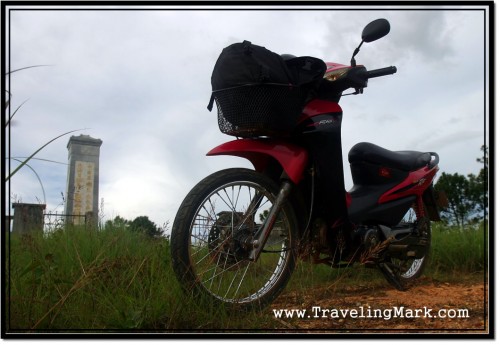Tap water in Laos is not potable (not safe for drinking). I would not drink tap water anywhere in South East Asia but as a long term traveler who really doesn’t need to get sick while on the road, I also brush my teeth and gurgle them clean with bottled water. Unfortunately when it comes to the cost of safe for drinking bottled water, as is the case of virtually everything else a traveler needs, the cost of staying hydrated is also far more expensive in Laos than in neighboring countries.
But that’s not all – as if being unreasonably expensive wasn’t bad enough, most bottled water available in Laos is not mineral water from quality underground source. It is mostly treated tap water, run through some filters – perhaps exposed to the UV radiation or ozone to kill potential bacteria – but to what extent it is being done and how reliably is the filtering process supervised is anybody’s guess. In an economy where food and beverage regulation are lax, it’s easy to cut corners, especially if there are quite decent profits looking to be made. Yet despite being of such low quality and questionable purity, bottled water costs more in Laos than quality mineral water from a coveted sources in Thailand or Cambodia.
Tiger Head appeared to be the one bottled water quality and purity of which didn’t seem to be as questionable, but a bottle of Tiger Head was even more expensive than already overpriced treated tap water. Careful though as lesser quality Lion Head bottled water is also sold in Laos but it’s not the same as Tiger Head. Lion Head simply utilizes the game of words to make itself easily confused with its superior competitor.
Tiger Head water is bottled by the same company that brews Beer Lao and as such, bears the same tiger head (yellow silhouette of the big cat’s head) logo as you would find on their beer. I found Tiger Head to be the best tasting and purest drinking water available in Laos, but while you can find it for as little as 5,000 Kip (roughly $.60 US) in Vientiane and Pakse, be prepared to shell out 6,000 (roughly $.75 US) or more for it in Luang Prabang and other areas.
For comparison purposes, 1.5 litre bottle of Water O – quality mineral water treated by using Japanese water purification technology can be bought for 2,000 Riel in Cambodia (about $.50 US) and two 1.5 litre bottles of Minere – the finest quality mineral water available in South East Asia can be had for 22 Baht (roughly $.68 US) at Thailand’s Family Mart stores. One bottle of Minere costs 15 Baht (about $.45 US) in Seven Eleven.
There is also a wide availability of water kiosks all over the countries like Malaysia or Thailand. These purified water dispensers can be found on the streets of every town and for mere 1 Baht (in Thailand) or 10 Sen (in Malaysia) – equivalent to $.03 US – you can have your 1.5 litre bottle refilled with treated and purified, safe for drinking water. Since owners of these water kiosks can choose how much water he/she wants to dispense per which coin, some of the kiosks would need as much as 2 or 3 baht (or 20 to 30 Sen in case of Malaysia) to fill up your 1.5 litre water bottle, but this is the most economical and most environment friendly way to stay hydrated in South East Asia.
Unfortunately, I have never seen a water kiosk in Laos so having to spend lots of money for bottled water was the only way to survive. The cost of a single bottle of water doesn’t seem that high, but since Laos is in a tropical climate, excessive sweating is normal and that increases your body’s demand for water. At the end of the trip, the cost of staying reasonably hydrated in Laos added up to quite a chunk of money. And dont even start me on the cost of energy boosting coconut water in Laos…


I wouldn’t rely on the quality of the 1 baht water refill dispensers in thailand. While I oftened used them to refill our bottle and save money/waste in the process, after several fills the bottle begins to stick something fierce. Well-purified water rarely does this, whereas treated tap water does. Just some helpful insight.
A good way to safe money and reduce the consumption of plastic bottle is to clean tap water yourself. I used CamelBack All Clear system which kills all the nasty stuffs with UV light. I treated tap water found at hotels and restaurants as well as river when hikking.. I travelled 2 months between Thailand and Laos and never got sick/ neither tommy pain. It is definitely worth the investment! Check it out here: